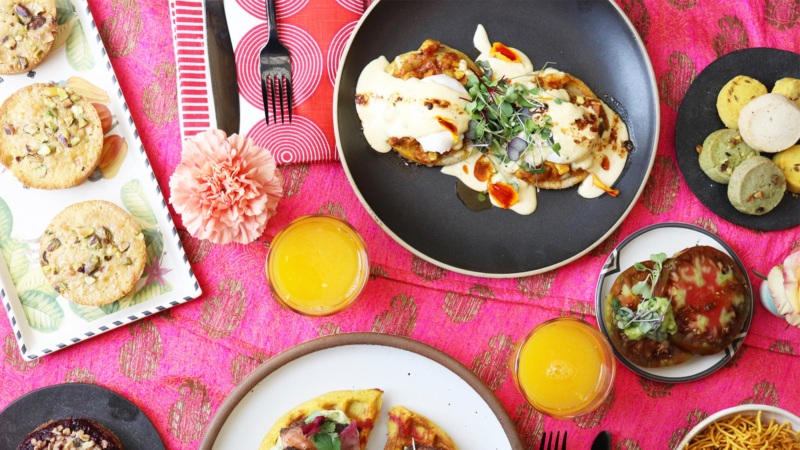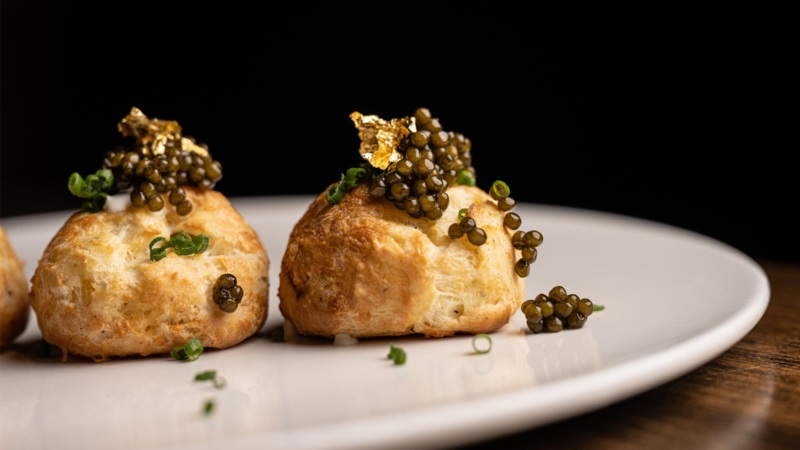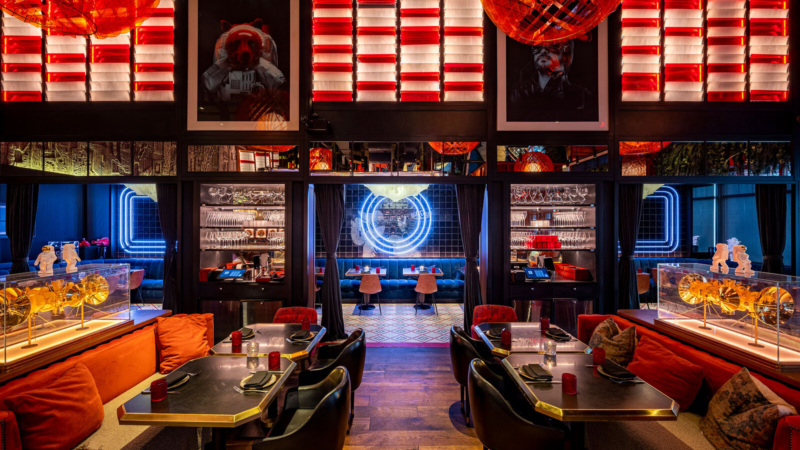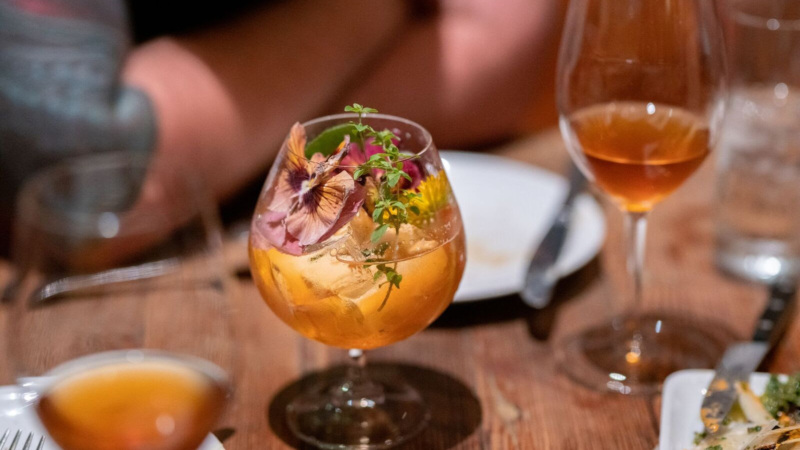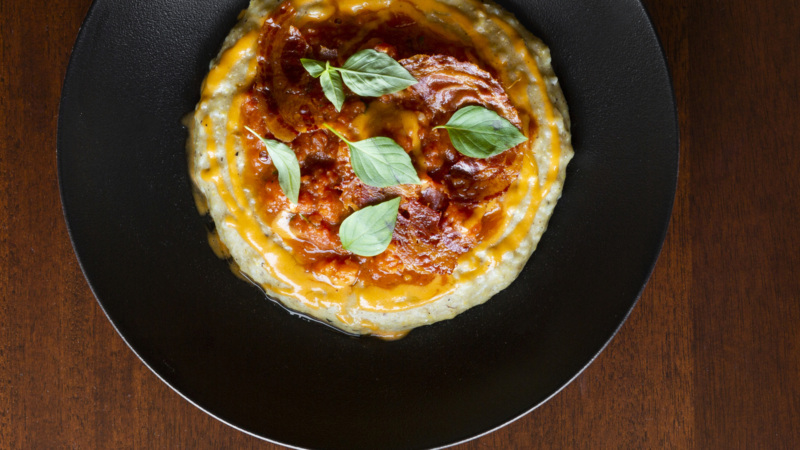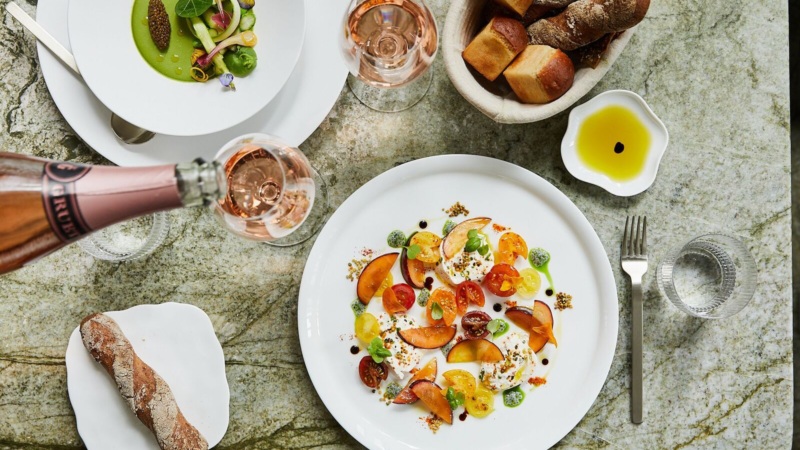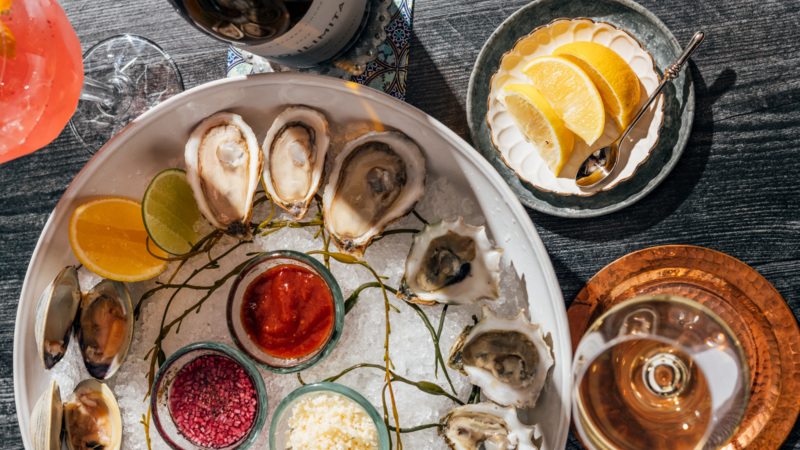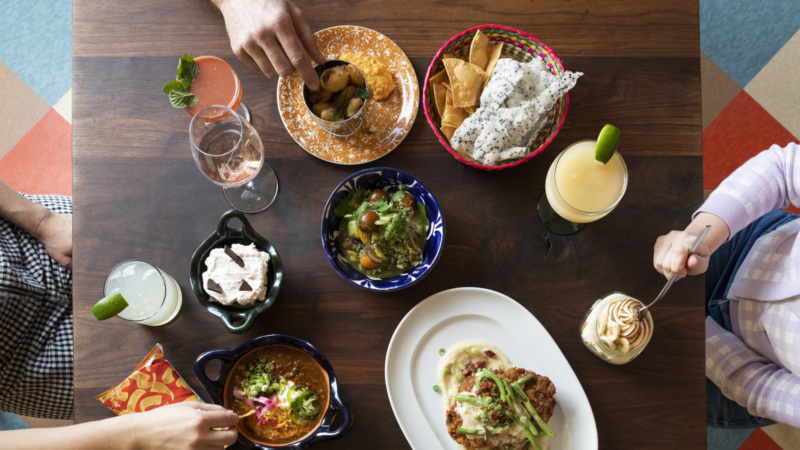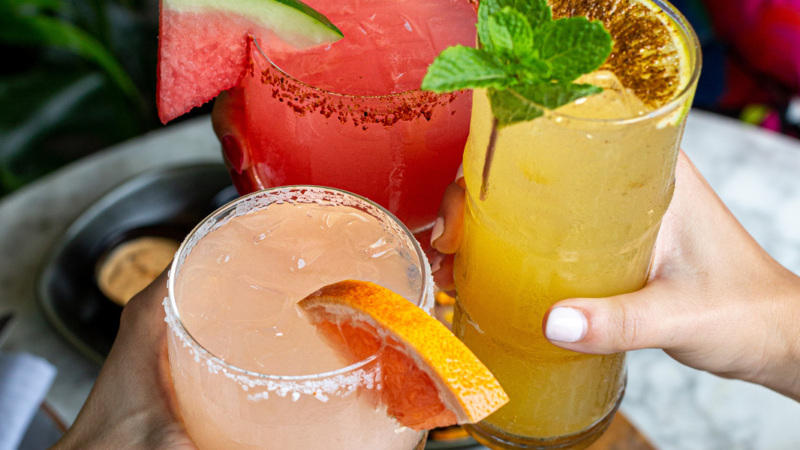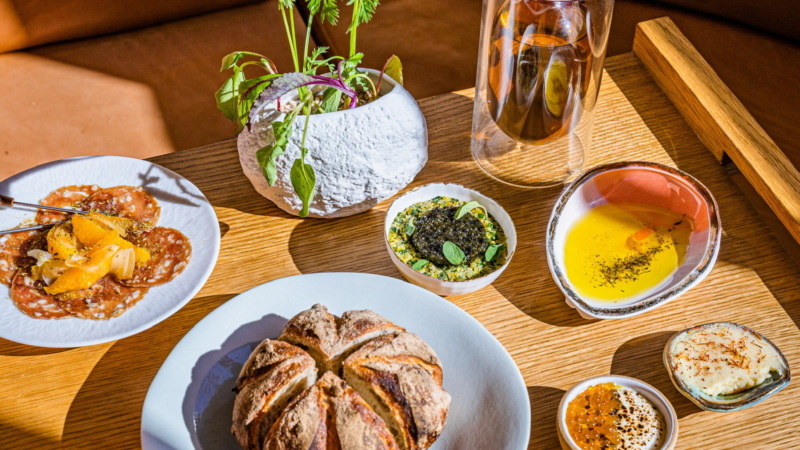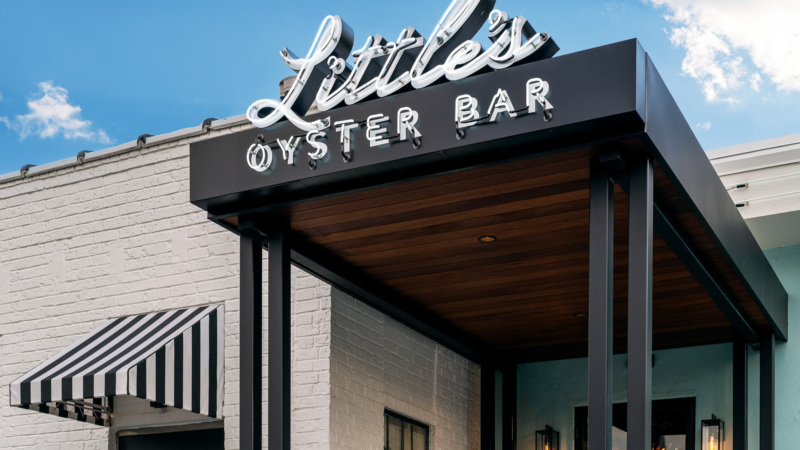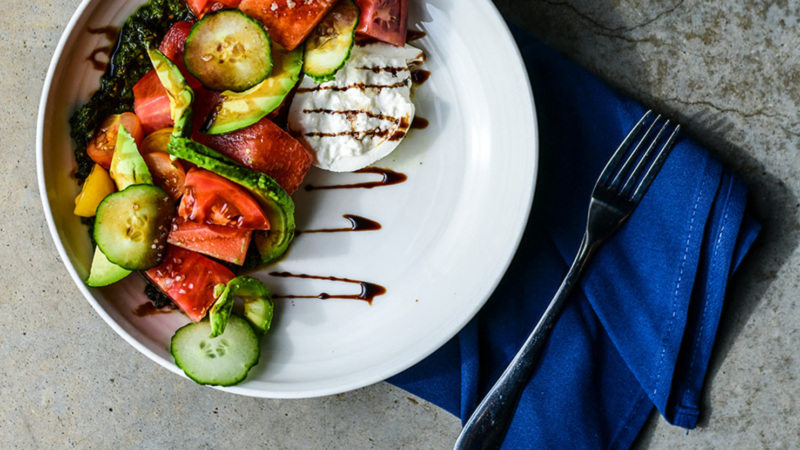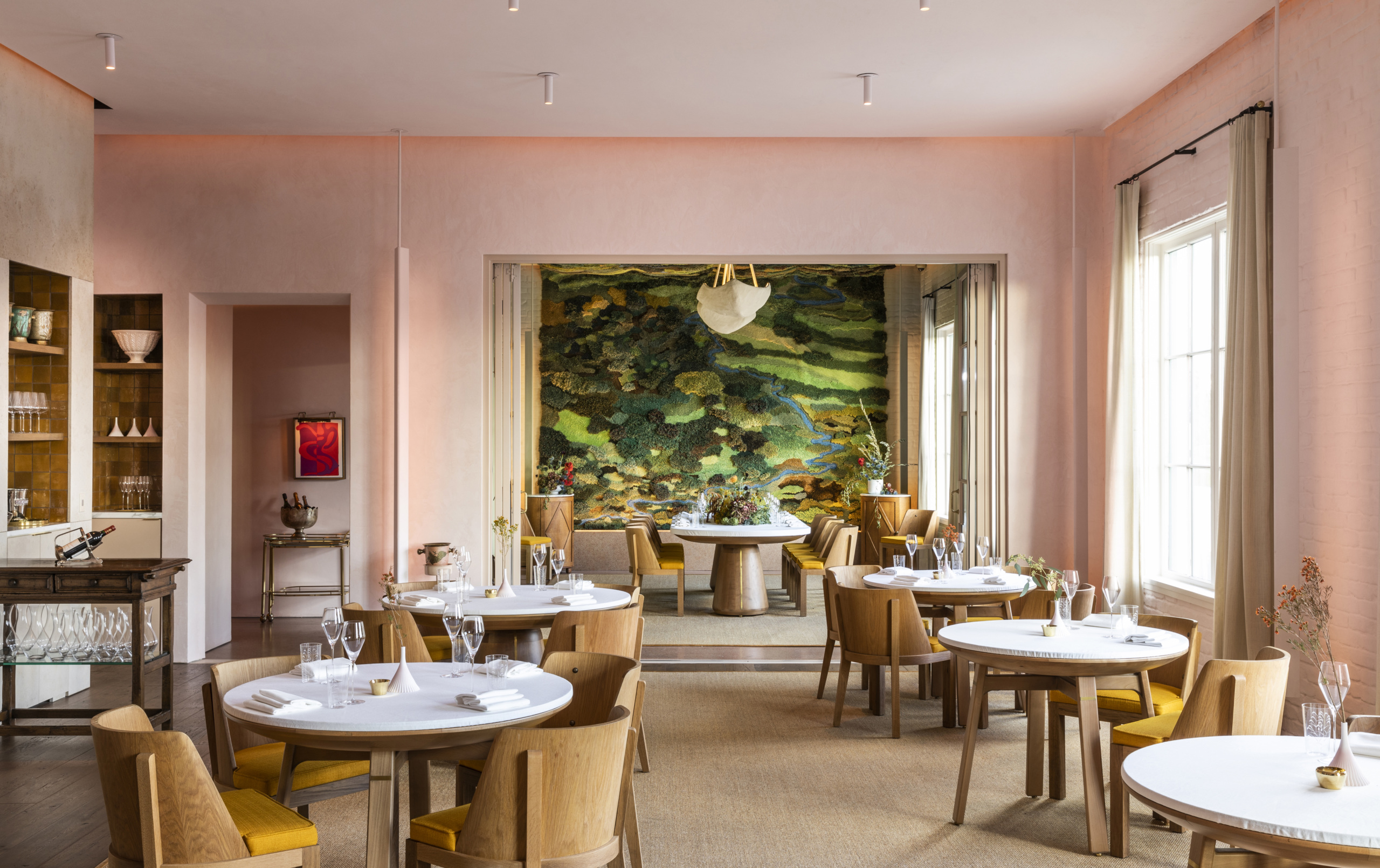
Everything You Need to Know About MARCH, Opening Soon in Houston
Before you go to a restaurant, what do you want — or need — to know most? In this new series, The Rundown, we’re sharing all the essentials about newly opened (as well as favorite) Resy restaurants.
This week, we’re in Houston, Texas, taking a look at MARCH, opening on March 31 for indoor dining. Reservations open on March 25.
MARCH is the fourth restaurant from Goodnight Hospitality partners, chef Felipe Riccio and Master Sommelier and restaurant operator June Rodil, the same team behind Houston’s Montrose Cheese & Wine, Rosie Cannonball, and Goodnight Charlie’s.
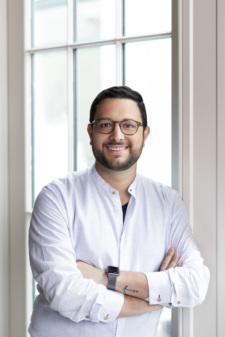
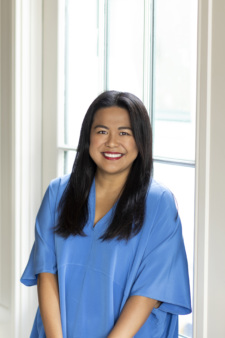
1. So, what’s with the name?
There’s a lot more to the restaurant’s name than you might first assume, and both chef Felipe Riccio and business partner June Rodil are the first to admit that the meaning behind the name might be “a little dense” but that it’s also meant to spark a conversation, too.
Riccio says that the name alludes to the overall concept for the restaurant — this idea of really exploring the culinary intersections of so many different regions within the Mediterranean.
“The name actually comes from an Olde English word that defines a territory, a piece of land that is at the boundary of a frontier of your own territory, like the Marche region in Italy, for example,” he explains. “It was land that was yours but wasn’t really occupied.” He says that at the restaurant, it’s the tension and richness between those boundaries that gets explored through food.
The name also represents a constant drumbeat of progress, of continually learning about the Mediterranean through its food and history, and translating that into the dining experience. “We’re constantly pushing that boundary of what we know and what we hope to know,” adds Rodil. The menu, both she and Riccio point out, will constantly evolve, based on the research they’re doing on the entire Mediterranean region.
And, adds Rodil, the name also alludes to the month of March and the start of spring. Seasonality is essential to the restaurant, which is why they work with local farms to source fresh herbs like lavender, thyme, several types of mint, and rosemary, as well as chicories and tomatoes.
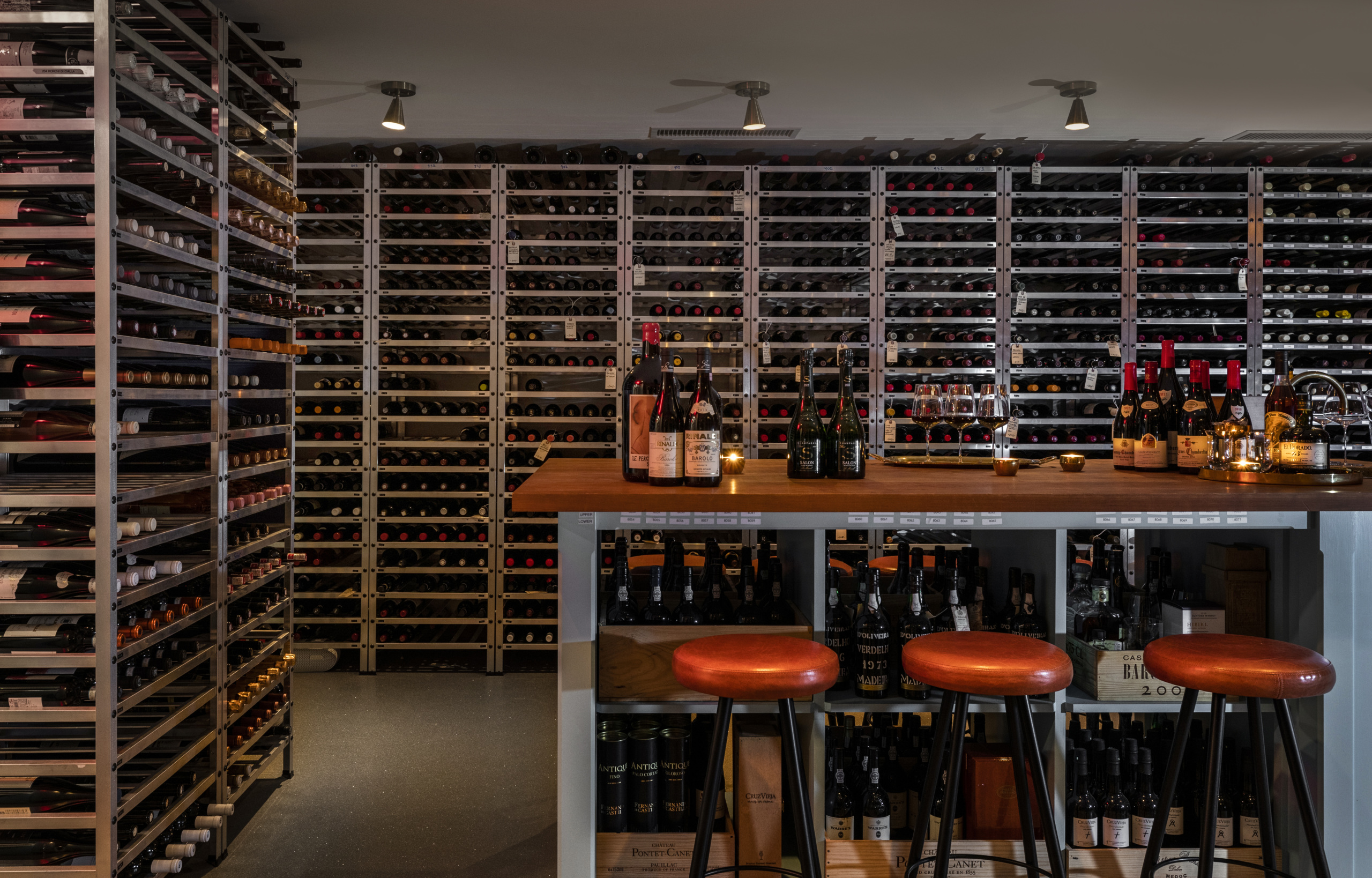
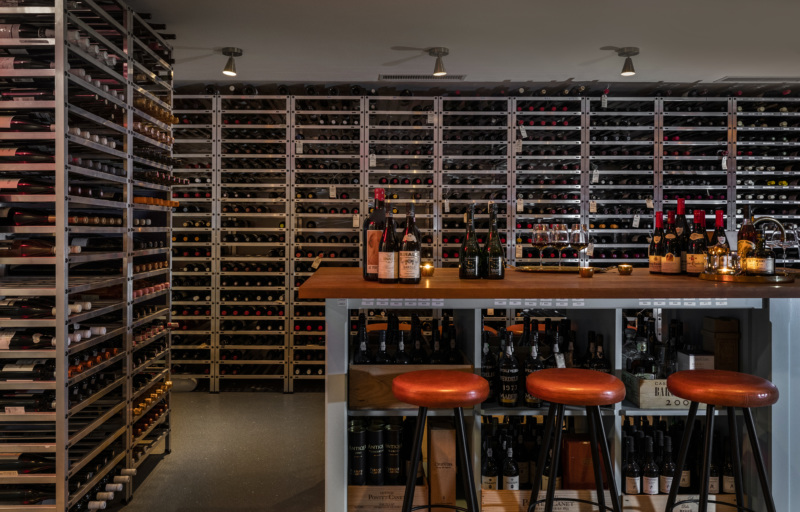
2. This restaurant sounds vaguely familiar. Wasn’t it supposed to open last year?
Indeed, it was. MARCH was originally slated to open in March 2020 but on the same day they were holding an orientation for the restaurant staff, they were informed of the imminent shutdown due to the pandemic.
The fine dining restaurant has been in the works for the past two years and even with the pandemic-induced delay in opening, both Riccio and Rodil remain positive.
“It caused us to take a pause to, to see how we can really have the stability for our team, which would allow us to have that stability for ourselves,” Rodil says. “It’s easy to be in the hospitality industry right now and be resigned or resentful to the world because you feel like the pandemic has done us wrong. But you can also really find the people who truly love the industry, and how to operate within it and I think that’s really where we’re at right now.”

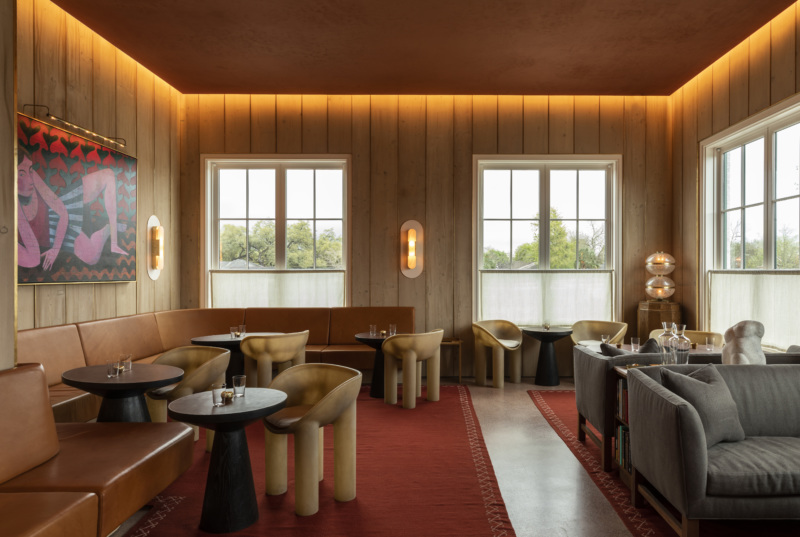
3. Or did it open last fall?
Sort of. Last November, Riccio and Rodil decided to open up the lounge for a limited time during the holiday season, giving diners a sneak peek of what they could expect once the restaurant finally officially opened. The lounge menu, which was available from November through January, focused on the Levant region, with dishes like a turnip green bulema, lahmajun flatbread, charred carrots, and a tamiya fitter. Since the lounge pop-up ended in January, Riccio and Rodil have been busy getting ready to officially open this spring.
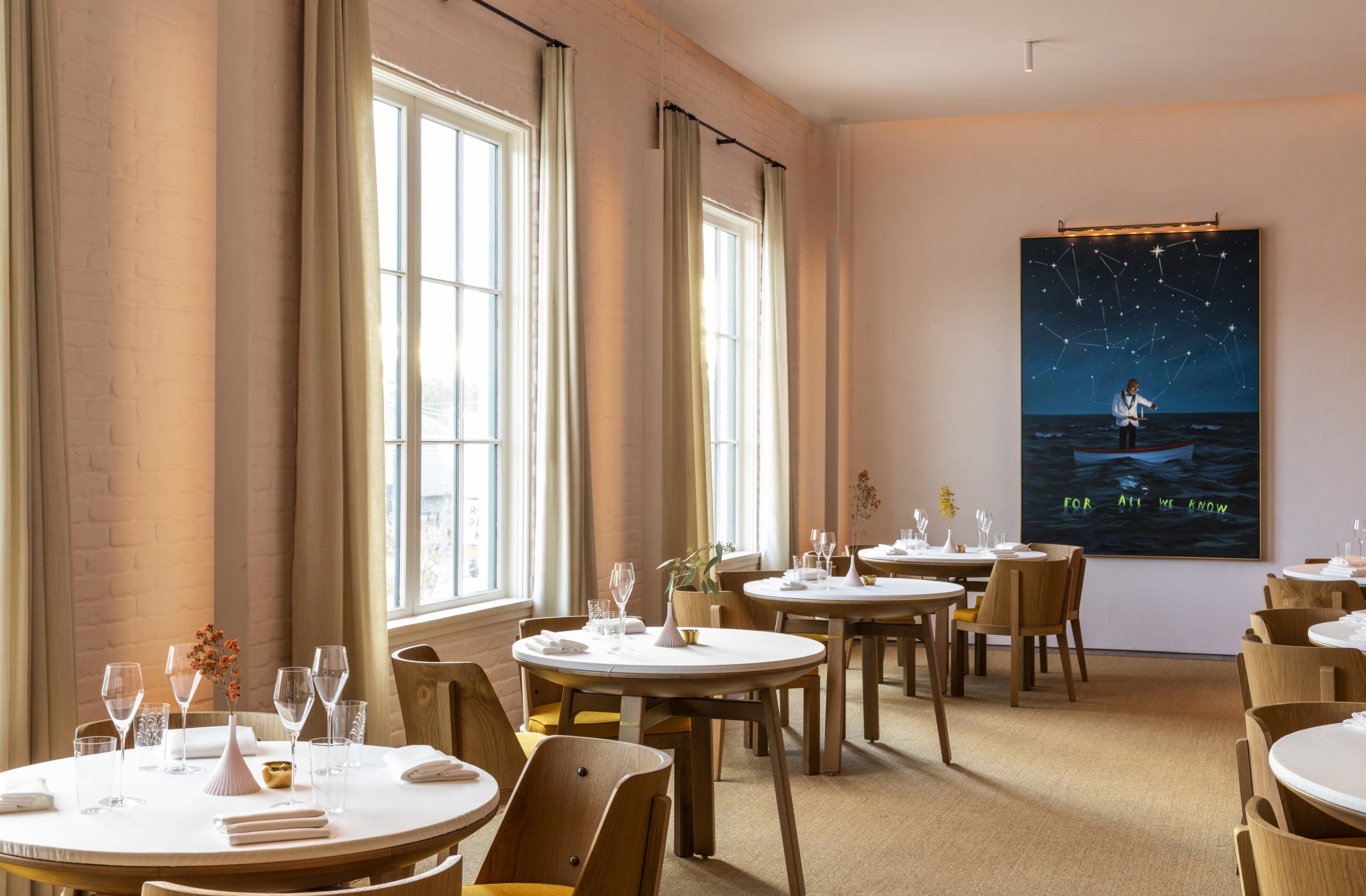
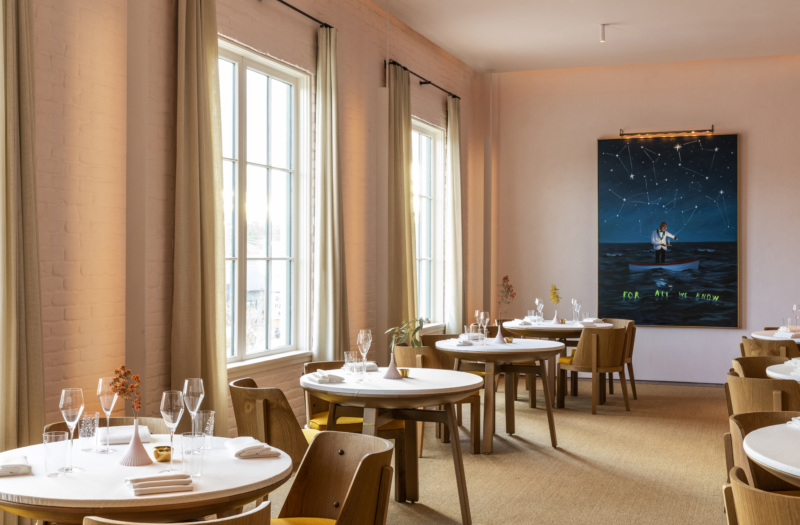
4. OK, let’s talk about the space.
MARCH is located in the same building as Rosie Cannonball and Montrose Cheese & Wine, on the second floor above them.
The first thing you’ll see when you enter the restaurant is the 700-square-foot lounge, which leads to the main dining area. The dining room, says Rodil, is meant to make you feel like you’re in the middle of a Tuscan sunset. There’s a warm, sunset-tinged glow to the room, which seats 28.
One thing you’ll want to pay attention to in the main dining room is your table itself. Riccio’s wife, Hayley, who also happens to be an industrial designer, helped design the tables, which were inspired by the dining tables at Reale, the three-Michelin-starred restaurant from chef Niko Romito in Rivisondoli, Italy.
“The tables there have these amazing, beautiful large wooden bases but on the top, all you see is linen — wrapped linen — like a fitted bed sheet around the top of the table,” explains Riccio. “So, Hayley designed a table so that the top of the table actually spins off of the table, and you’re able to tuck the tablecloth inside.” He jokes, “it looks like a shower cap, but it’s super elegant. I’m so excited to be able to have people in the space eating on the tables.”
Another item to look for is Oliver Jeffers’ painting of a maître d’, called “For All We Know.” “He’s in the middle of the ocean in a tiny boat, holding a towel over his arm, a little napkin over his arm, and a little candle,” Riccio describes. “There are so many times I’ve looked at that painting while we’re sitting in this beautiful dining room that was empty and not in operations, and just trying to figure out when we’re going to open; I think it’s always going to remind us of 2020 forever, but in the most positive way. I always get lost in that painting.”
Rodil and her restaurant group partners had a hand in picking out the artwork for the restaurant, and one of her favorite pieces is the specially commissioned tapestry that hangs in the 12-seat private dining room. The lush, green artwork was designed by Argentinian artist Alexandra Kehayoglou. Not only does the tapestry act like a sound dampener, but it’s a stunning depiction of a Mediterranean landscape. Rodil likes to imagine it’s Piedmont, and Riccio likens it to Cinqueterre, but both say it’s a universal, quintessential Mediterranean scene.
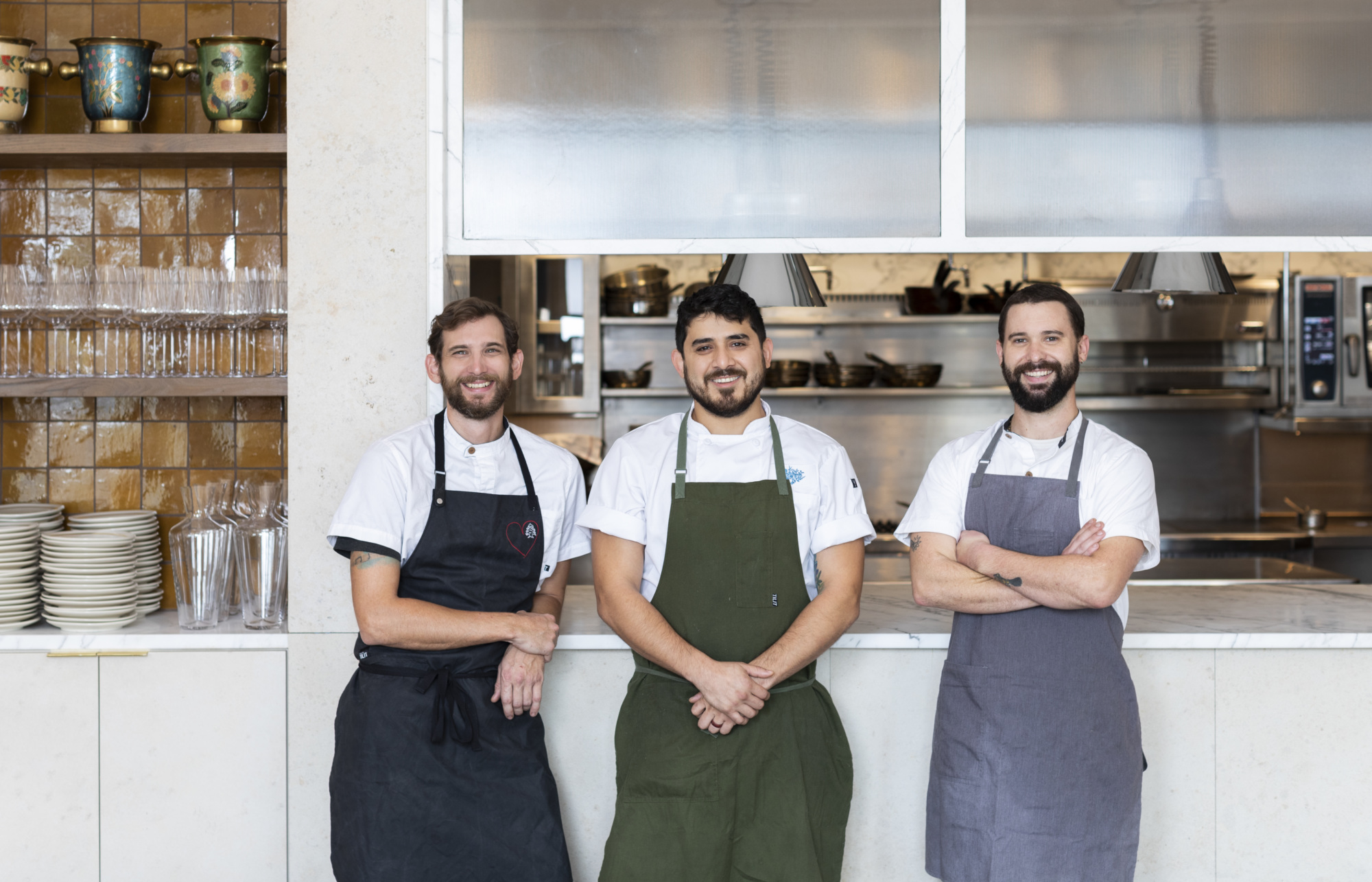
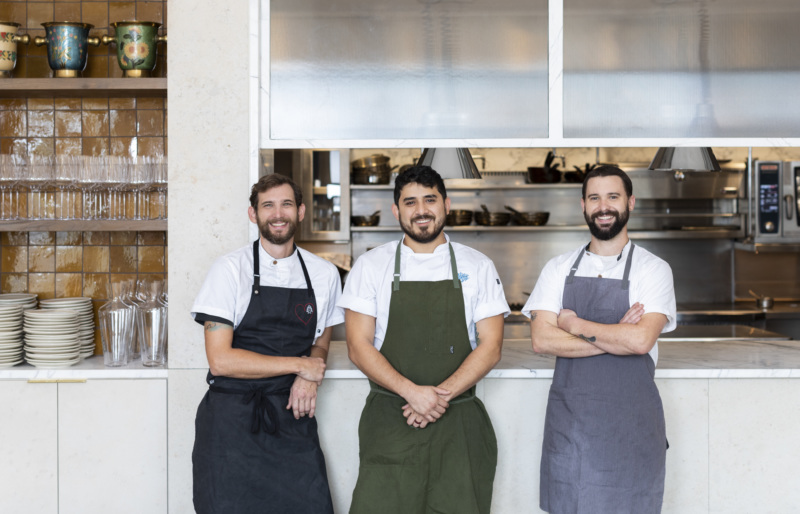
5. The chefs have done their homework — a lot of it.
Riccio and Rodil are not at all kidding when they describe the restaurant as being “research-based.” A library of more than 250 books has informed the culinary team who worked with Riccio to develop the tasting menus. Those menus will constantly change and evolve to focus on different ideas, regions, and timelines.
“We’re trying to answer the question, ‘What is the Mediterranean?’ through the food, by researching the cultures, the history, the traditions of the food and the people there,” Riccio says. “My roots are both Spanish and Italian so for me, Mediterranean food contains a lot of memories.”
A library staple for Riccio and his team of chefs has been Clifford Wright’s “A Mediterranean Feast,” as well as Adrian Tinniswood’s “Pirates of Barbary.”
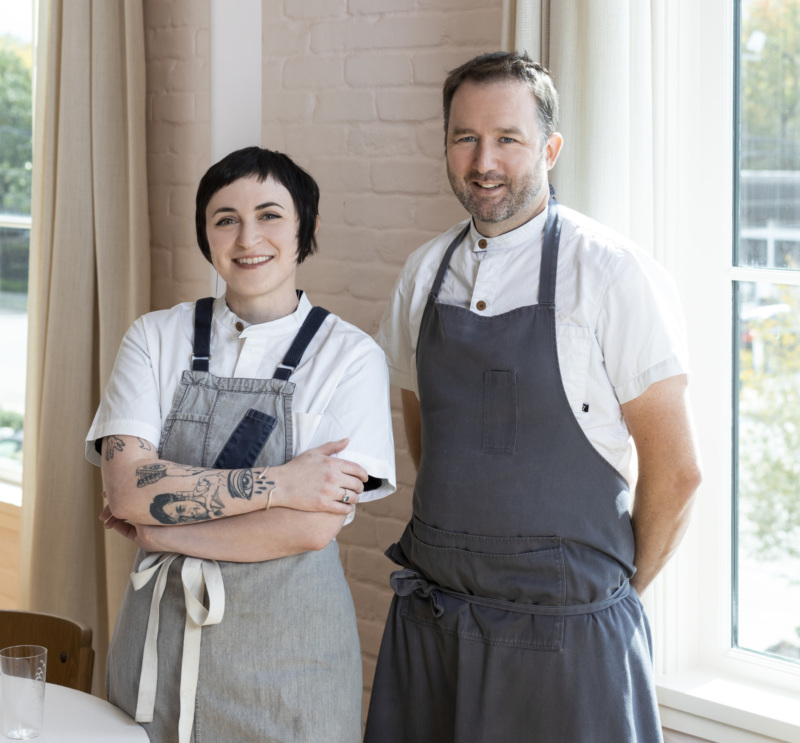

Personally, Riccio also loves recommending Niko Romito’s “10 Lezioni de Cucina” (10 Lessons From the Kitchen). “It’s a book about his philosophy on cooking and it goes through his thought process and how he understands food, and it’s been very influential for me,” Riccio says. “I don’t know if I’ve ever had a meal that a chef has been able to explain his philosophy as well as it was executed on the plate as it was when I ate at his restaurant, Reale.”
Research for the restaurant isn’t limited to reading, either. While they try to source as much as they can locally, Riccio and his chefs have also had to source a number of ingredients from all over the world, especially for spices, like a very particular type of blue fenugreek from Georgia (the country, not the nearby state) or Egyptian rose petals.
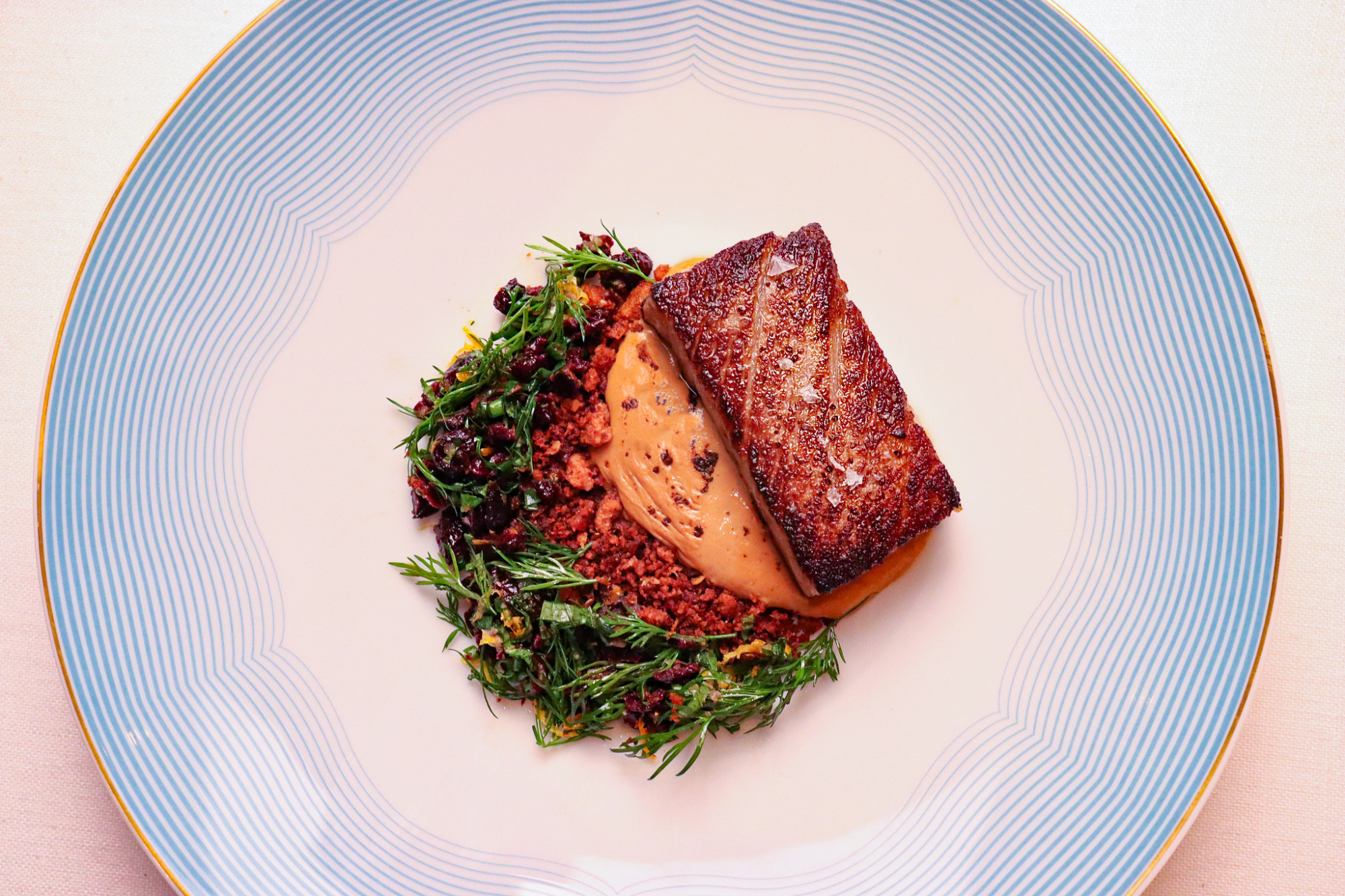

6. Here’s a sneak peek of what you can expect to eat …
The opening menu will focus on the Maghreb, also known as the Barbary Coast of Northwest Africa, and home to countries that include Algeria, Libya, Mauritania, Morocco, and Tunisia. The tasting menu will be offered in two different formats: a six-course ($145 per person) and a nine-course ($195 per person) menu.
While they want to keep most of the menu a surprise, they did say one of their favorite courses was inspired by a Tunisian sandwich called fricassé, usually made with tuna, olives, and spices. Sous chef Christian Hernandez led the development of their take on this classic street food favorite, called the Tuna Ventresca. At the restaurant, fricassé is made with locally sourced tuna belly that’s quickly pickled in the style of a North African escabeche, and then slightly seared, served with a crumble of fresh herbs, dried Cuquillo olives, and anise-flavored crunchy bread migas.
“You’re pulling out this flavor from a very aromatic bread from Morocco to lend that quality to the dish rather than the traditional sort of baguette roll that you would find in the actual sandwich,” says Riccio. “And you’re balancing it with these salty olives and the richness of the tuna with a pickle, and then you’ve got this roasted pepper sauce that was originally from Andalusia. It’s street food, but it ends up being a beautiful plate in in the progression of a tasting menu.”
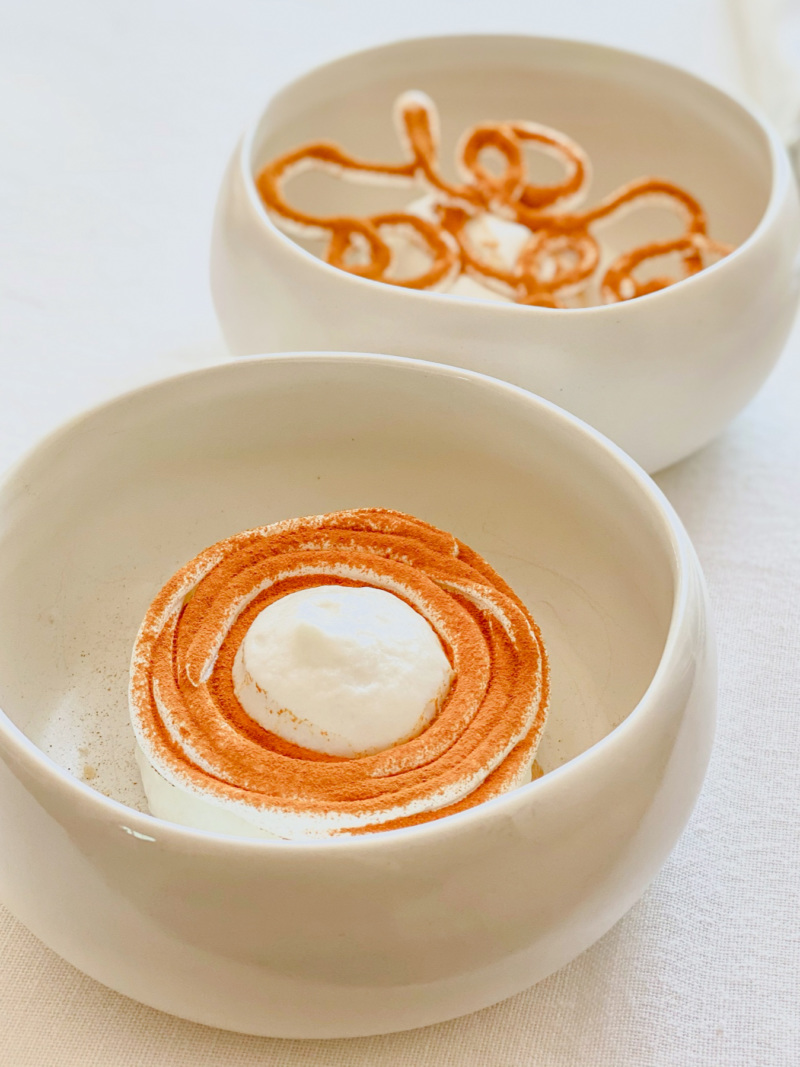

“But it doesn’t lose that essence of what makes that sandwich so damn delicious,” adds Rodil. Other dishes to look for include a Fifth Quarter Tagine made with offal, and an Heirloom Turmeric and Honey dessert with preserved lemon curd and beeswax gelato.
While some tasting menu experiences are super avant-garde or cerebral, Riccio and Rodil said they want the dining experience to be “disarming.” “We want you to feel relaxed because of how comfortable the flavors are,” says Rodil.
“I know tasting menus can be a challenging for a lot of people, but we’re not doing 20 courses or anything like that by any means,” says Riccio. “But the flavors we’re working with, they’re so familiar to so many people. And the end goal is the food, and the food tasting delicious. That’s what matters most.”
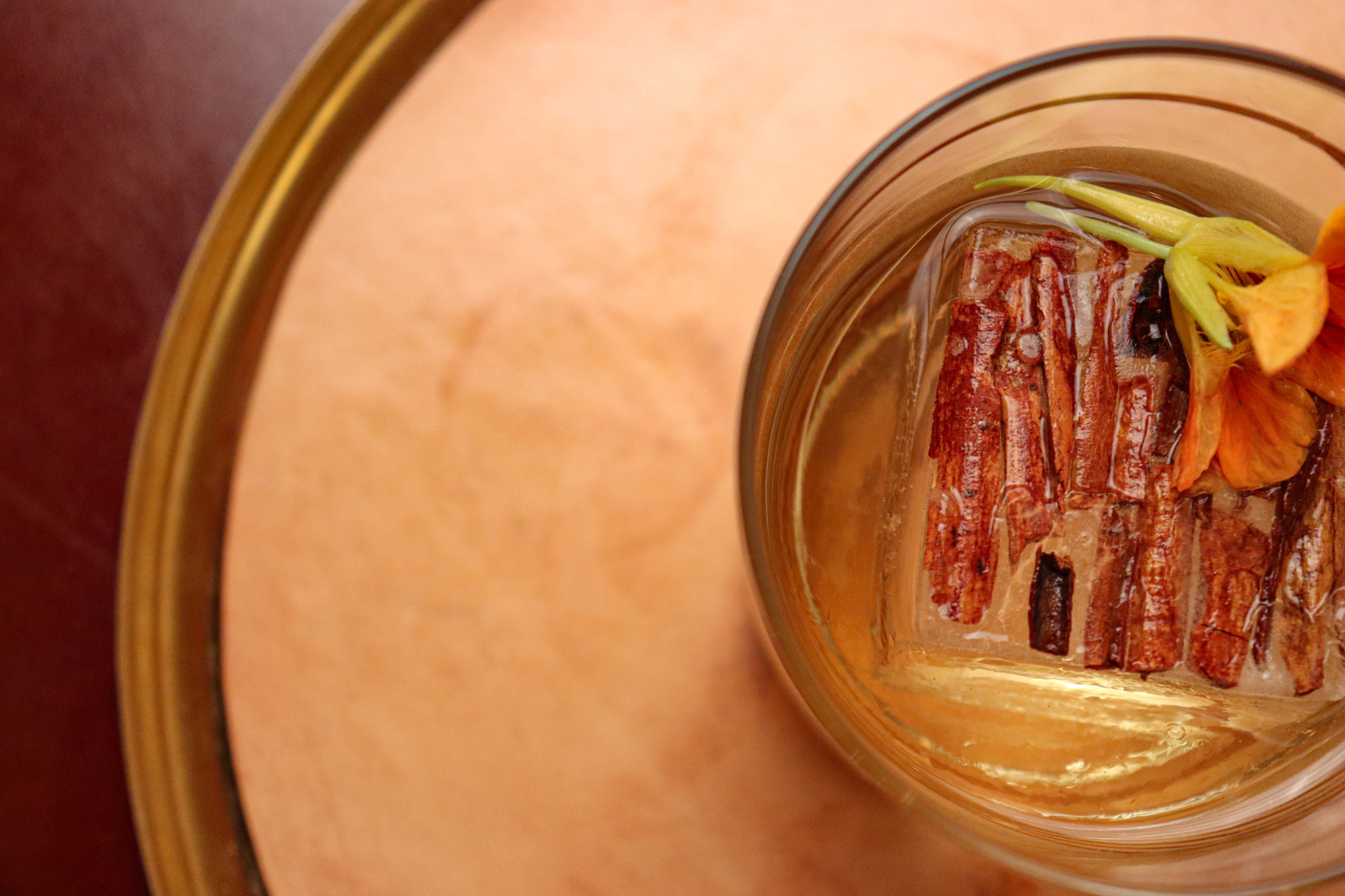
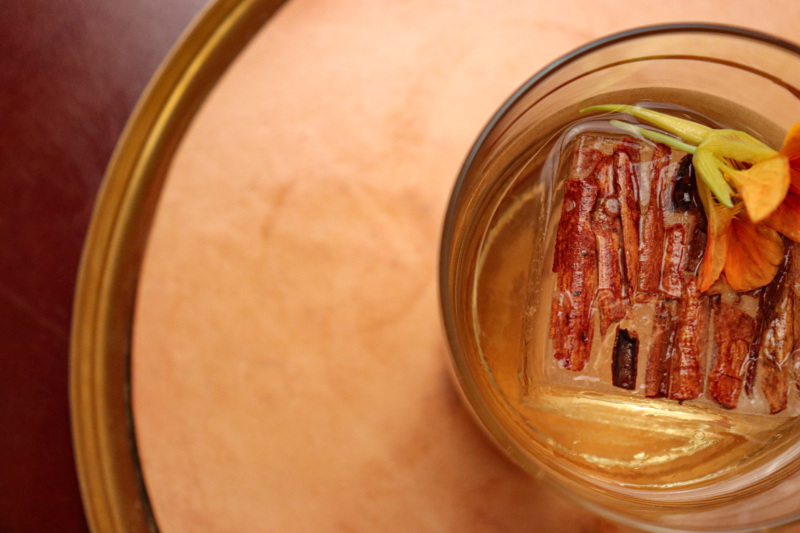
7. … And here’s what you can drink.
Rodil, a master sommelier, is drawing from an 11,000-bottle wine cellar for MARCH and with the wine list, she wants to show the breadth of their producers, rather than just one bottle of wine that they might happen to make. A wine pairing for the six-course tasting menu ranges from $65 to $125 (premier) per person, and for the nine-course tasting menu, it ranges from $85 to $185 (premier) per person.
“It’s going deep, because we want to show how diverse the wine world can be, and how much intersection there is here, too,” says Rodil. “It’s really hard in Texas to do a very deep cellar in terms of vintages, but we wanted to showcase the breadth of the ability of certain winemakers and obviously, winemakers that are in tune with the region.” One of the biggest producers on the wine list is Chateau Musar from Lebanon.
All captains at the restaurant are also skilled sommeliers who can recommend who knows the wine list extensively and are “intuitive” about how to talk to guests about wines. “That’s a rare gift, right?” says Rodil. “For a wine professional to not just go super deep and nerdy right away, but to really understand and have the intuition of what a person needs and wants.”
For cocktails, bar manager Alex Negranza is drawing inspiration from the eight mother herbs in Mediterranean cooking but not in the expected ways. “It’s not an Old Fashioned with some thyme,” says Rodil. “You’ll see cocktails that are named sage, mastic tree, or olives, based on the herbs that we consider the heart of the Mediterranean, and he’s layering those flavors into the cocktail program.”
MARCH is open for indoor dining Wednesdays through Sundays from 6 to 10 p.m., with reservations accepted 60 days in advance. Reservations open on Thursday, March 25.
Deanna Ting is a Resy staff writer. Follow her on Instagram and Twitter. Follow Resy, too.

